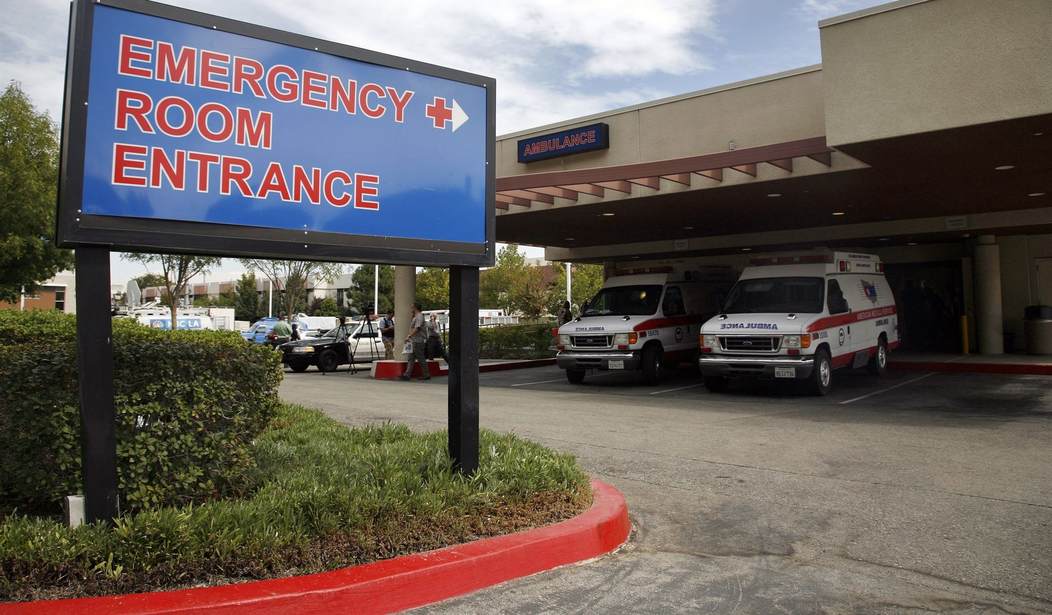Kaiser Health News, a publication of the Kaiser Family Foundation, reports that emergency rooms are overwhelmed nationwide, even in areas where COVID-19 is very low. According to the report:
“We are hearing from members in every part of the country,” said Dr. Lisa Moreno, president of the American Academy of Emergency Medicine. “The Midwest, the South, the Northeast, the West … they are seeing this exact same phenomenon.”
Although the number of ER visits returned to pre-covid levels this summer, admission rates, from the ER to the hospital’s inpatient floors, are still almost 20% higher. That’s according to the most recent analysis by the Epic Health Research Network, which pulls data from more than 120 million patients across the country.
“It’s an early indicator that what’s happening in the ED is that we’re seeing more acute cases than we were pre-pandemic,” said Caleb Cox, a data scientist at Epic.
The article gives specific stories of emergency departments that are out of beds and having trouble accommodating admissions. Overwhelmed facilities create risks to the patients in their care.
But now, they’re [emergency rooms] too full. Even in parts of the country where covid isn’t overwhelming the health system, patients are showing up to the ER sicker than before the pandemic, their diseases more advanced and in need of more complicated care.
Months of treatment delays have exacerbated chronic conditions and worsened symptoms. Doctors and nurses say the severity of illness ranges widely and includes abdominal pain, respiratory problems, blood clots, heart conditions and suicide attempts, among other conditions.
Sadly, there may be more than one issue going on here. Dozens of public health experts, including Dr. Scott Atlas and Dr. Jay Bhattacharya from Stanford University, predicted the impact of lockdowns on mental health and chronic disease. They were censored and ignored. As Bhattacharya and his colleague Dr. Martin Kulldorff, an epidemiologist from Harvard, have noted, public health is about more than one viral illness:
A fundamental public health principle is that health is multidimensional; the control of a single infectious disease is not synonymous with health. As an immunologist, Dr. Fauci failed to properly consider and weigh the disastrous effects lockdowns would have on cancer detection and treatment, cardiovascular disease outcomes, diabetes care, childhood vaccination rates, mental health and opioid overdoses, to name a few. Americans will live with—and die from—this collateral damage for many years to come.
Two California doctors, Dr. Dan Erickson and Dr. Artin Massihi, who own seven urgent care facilities, warned of the potential for lockdown-related illnesses in April of 2020. At the time, their press conference got censored for correctly explaining the impact on the immune system and pleading for lockdowns to end:
The combination of reducing regular exposure to pathogens in the environment and lowering the good bacteria that helps us fight off infection, concerns both physicians. By reserving nearly all healthcare system assets to treat COVID-19, the available capacity of the system in their area has actually contracted. Two hospital floors are closed. Healthcare workers have been furloughed. In this environment, they worry about an increase in opportunistic infections that will strain the remaining resources as people get back to more normal activities if the isolation of healthy individuals continues.
It appears these professionals and others have been vindicated. Something similar is going on in Australia. On Oct. 31, The Premier of Western Australia, Mark McGowan, said, “Our hospitals are under enormous pressure. This is the same in [the rest of Australia]. This has been something no one has ever seen before, the growth in demand in our hospitals, why it is is hard, hard to know. There is huge numbers [sic] of people coming through the door, so we’re doing everything we can to try to manage it.” Australia’s vaccination campaign started late, but 66.3% of the population is fully vaccinated.
Recommended: Is This the End of the Vaccine Mandate?
A few of the illnesses mentioned in the article should give us all pause. Abdominal pain, respiratory problems, blood clots, and cardiac disease, including myocarditis, pericarditis, and heart attacks, have been linked to the COVID-19 vaccines. Reported just today, Florian Dagoury, the world’s top static breath-hold free diver, has been diagnosed with myocarditis and pericarditis following his second dose of Pfizer. It may end his career. There have been other high-profile cases among athletes, and the estimate is these heart issues impact somewhere between 1 in 3,000 and 1 in 6,000 men under 30. FDA officials acknowledged a rate of 1 in 5,000 in a recent committee meeting.
Additionally, the broad category descriptions mirror the post-COVID-19 vaccine injuries listed in declarations signed by 12 doctors and sent to the CDC and FDA recently. None of the patients had a history of being immunocompromised. Yet some of the respiratory and abdominal illnesses were complicated by pathogens common in patients with impaired immune function. Two of the acute abdomens listed among the injuries included clots that caused the tissue to die. The physicians describe two categories of illness in previously healthy patients that Kaiser’s article doesn’t mention: neurologic and neuromuscular injuries.
In any case, what the emergency rooms are seeing is the tip of the spear. The lack of preventative and ongoing care during the early months of the pandemic will cause patients to be diagnosed at a later stage in illness. Vaccine injuries are underestimated at rates we don’t fully understand. Dr. Robert Malone has said these kinds of injuries may be cumulative and increase with booster doses. In any case, an imprecise and hysterical public health response is responsible for much of the surge.
Our leaders shuttered hospitals to all but COVID-19 and laid off hospital staff. They terrified the public, who avoided healthcare altogether. Political leaders have pushed vaccination at all costs despite minimal information on side effects and injuries. Now, vaccine mandates will cause further shortages in beds due to decreased staffing. It has taken the “experts” less than two years to start to bring the best healthcare system in the world to its knees over a virus that is as fatal to people under 50 as a severe flu virus.
It is time to stop listening to them.










